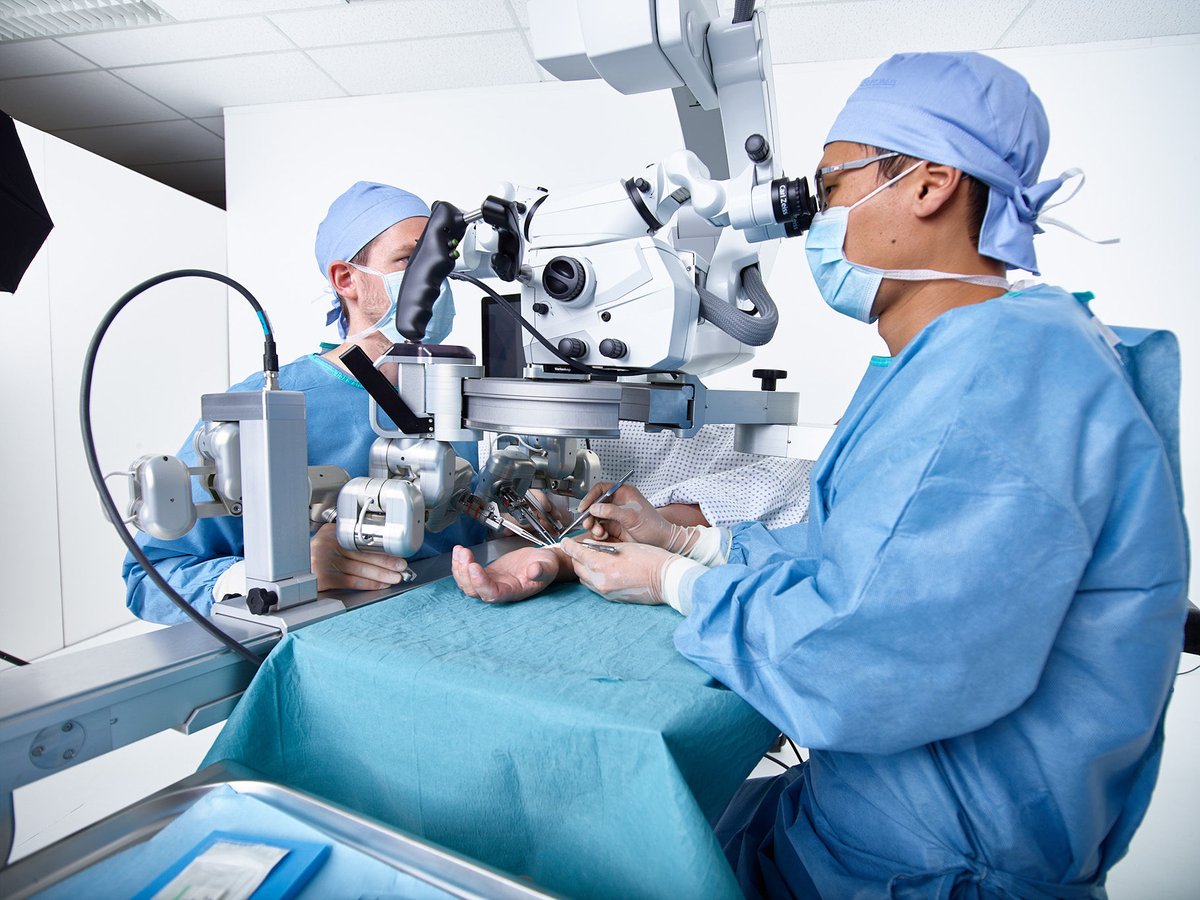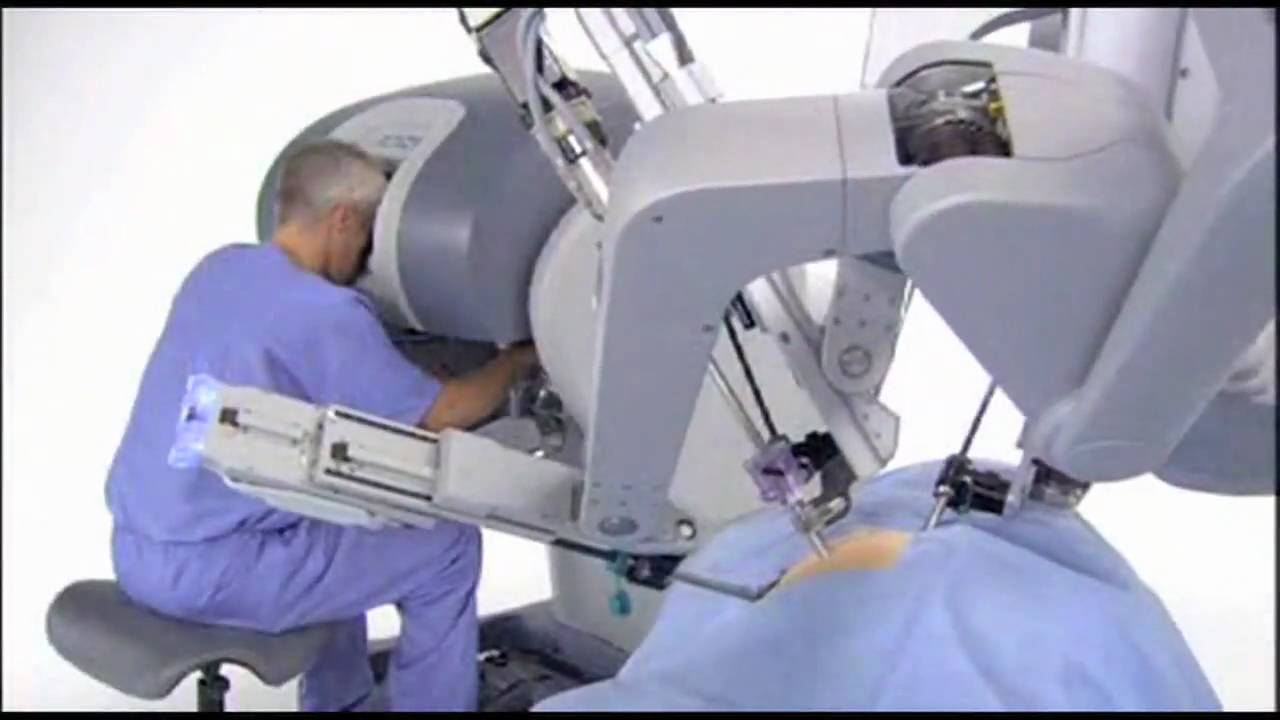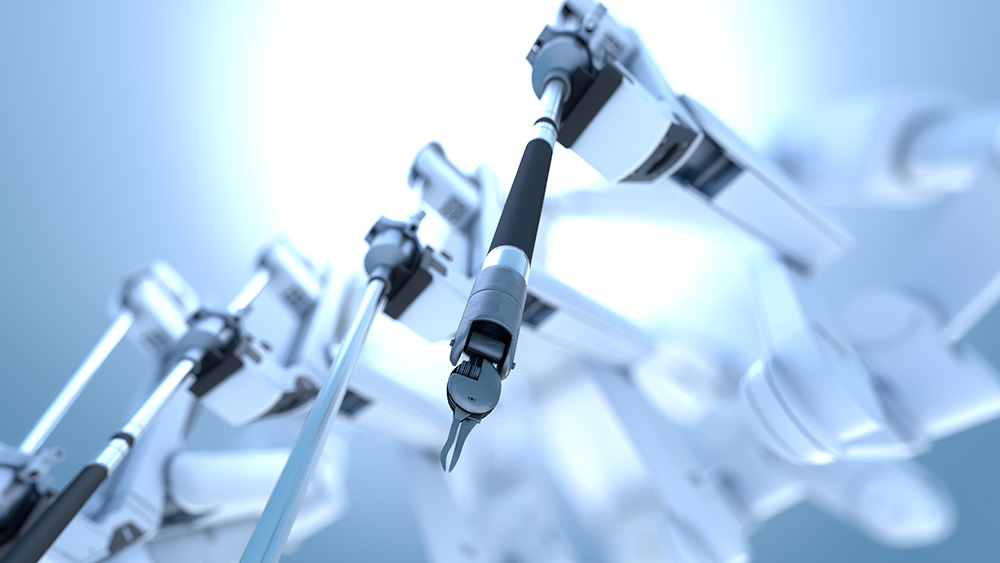Microsurgery - How Has Technology Helped In Its Improvement?
As you already know, not everyone has the aptitude to become a surgeon. This is largely because, at its heart, success in this field depends on having the right skills, accuracy, and knowledge of what needs to be done. But over the years, technology has helped millions of surgeons and advanced a number of surgical specialties, including microsurgery.
Author:Suleman ShahReviewer:Han JuJul 27, 202335.2K Shares497K Views

As you already know, not everyone has the aptitude to become a surgeon. This is largely because, at its heart, success in this field depends on having the right skills, accuracy, and knowledge of what needs to be done.
But over the years, technologyhas helped millions of surgeons and advanced a number of surgical specialties, including microsurgery.
When the operating microscope was invented, it was used to write the first descriptions of blood vessel anastomosis. This was the beginning of microsurgery.
In 1964, a rabbit's ear was replanted using a microsurgical technique, a notable first considering the blood arteries used in the process were as thin as 0.1 cm. By the 1960s, microsurgical techniques had gained popularity.
Two years later, a monkey had surgery to attach a toe to its hand.
This showed again how important microsurgery is in modern medicine.
The growing popularity of finger replantation and digital artery repairs served to increase the procedure's success.
What Is Microsurgery?
As the name suggests, microsurgery is a technique that may be used on various body parts, but in contrast to other procedures, it necessitates the use of a microscope to allow the surgeon to see and treat the problem.
Blood arteries, tubes, and nerves, as well as parts of the body like the ears, nose, and throat - all of which have incredibly small and delicate structures - can all fall under this category.
In addition to these bodily parts, it can also be done on the eyes to treat problems like cataracts.
Transplanting tissue from one area of the body to another and reattaching severed sections are two of microsurgery's principal uses.
It is incorrect to say that surgery needing an operating microscope is simply referred to as microsurgery.
The scope and complexity of specialization are not adequately represented by this vague term.
Also, microsurgery is an important part of plastic and reconstructive surgery because it is often used to reattach body parts that have been cut off and to heal damaged skin, muscles, and nerves.

Robotic Micro Surgery
Who Can Undergo Microsurgery?
Plastic surgeryis using microsurgery more and more to reattach or replant body parts that have been cut off and to fix damaged skin, muscles, and tissues.
Most importantly, microsurgery is now an important part of neurosurgery. It is used to treat problems with the blood vessels in the brain and cancerous tumors.
Thus, people who require the following surgeries or treatments should have the operation done:
- Reattachment of a bodily part after amputation
- Otolaryngology (ear, nose, and throat) surgery
- Cosmetic procedure
- Cataract removal
- Vasectomy
- Thoracic ligation
- Treatment of cancerous tumors or surgical removal
- The use of surgery on the skin and muscles during reconstruction
Patients receive intravenous fluids after surgery and are put on a liquid diet for 12 to 24 hours.
Additionally, they are recommended to exercise extreme caution, get plenty of rest, and offer round-the-clock support or care.
Following the procedure, patients must also stay warm and hydrate themselves appropriately.
Most importantly, the body part where the surgery was done needed to be kept elevated in order for the extra fluid to adequately drain.
Some pain is possible after the procedure, although this is readily controlled with painkillers.
The skin in the area of the body that had surgery may feel heated and turn flushed or reddish as a result of the procedure.
The area needs to be closely watched, and if the color, warmth, capillary refill, tissue turgor, or fullness of the area change, the doctor needs to know.
How Does Microsurgery Work?
Despite the great magnification, the tools used in microsurgery help enlarge the working area and enable precise movement.
Without magnification, it would be very hard to work with some structures because they are so small.
The microscope, microsurgical equipment, and a microscopic mat are the three tools that are most important for microsurgery.
Because each operating microscope has a unique intended use and set of features, they are typically not interchangeable.
Each microscope has a movable arm that allows the surgeon to adjust the microscope's position.
The complexity and uniqueness of this sort of surgery necessitate a number of considerations and the introduction of a number of aspects that would not be present in a typical surgery.
Given their small size, the surgical sites can only be seen with the microscope's unique set of lenses and the high-intensity light source employed during the process.
In the operating room, low lights are often used to help the microscope see better.
A video camera that provides a view of the operating room is also available to the surgical team.
Additionally, five to forty times of magnification is typically needed for microsurgery.
Lower magnification is used to identify and expose structures.
Even greater magnification is frequently needed for microsurgical correction.
For magnifications between two and six times, you can use surgical loupes or magnifying lenses that are attached to a pair of eyeglasses.
The various microsurgical tools used in microsurgery are specifically created.
These tools are designed to be able to control even minute body structures.
The following are some devices used in microsurgery:
- Forceps
- Needle holders
- Scissors
- Vascular clamps for stopping bleeding
- Applicators for clamps
- Irrigators for cleaning
- Blood vessel dilators are used to widen blood vessel cuts.
- Common surgical instruments
Suturing and stitching are done using specialized threads and needles.
The size of each suture thread used in this procedure varies depending on the procedure it is used for.
The diameter of a typical suturing thread ranges from 2-0 (0.3 mm) to 6-0 (0.07 mm).
The suture thread can be natural, synthetic, non-absorbable, or absorbable.
The non-absorbable suture can maintain its strength while the absorbable suture can only remain in the body for a limited period of time before it breaks down.
Silk, gut, and linen make up the natural suture threads.
Nylon, polyester, or wire are used to make synthetic suture threads.

Introduction to Microsurgery Part 1
The Improvement Of Microsurgery Through Technology
Due to the complexity and difficulty of microsurgery procedures, technology has helped advance the field in a number of ways, such as:
2D Planning
As you are already aware, since each of us has a unique body, each of our bodily parts is unique in termsof structure, size, and shape.
For a very long time, surgeons planned surgery on various body regions using antiquated techniques.
However, new technology has changed this.
For instance, in the past, x-rays were used to view the skeletal elements of a specific area that required surgery, which left surgeons with little room to plan the procedures they would need to perform.
For instance, the state of, for instance, a joint that has to be replaced may now be seen clearly and comprehensively by doctors thanks to technology like electronic x-rays and potent computer programs.
Also, this technology makes it possible to accurately measure a wide range of things, which makes it easier for operators to choose the best method.
3D Planning
These days, doctors may utilize MRIs and CT images to plan operations in 3D since they are so widely available.
Doctors may now more readily examine the bone structures, tissues, and muscles thanks to these technologies, which means they'll be able to fully prepare for the surgery by knowing exactly what they'll need to perform days, weeks, or even months before it actually takes place.
But this isn't just advantageous for the surgeons.
Assistants, nurses, and technicians will be well aware of how the operation will be performed because microsurgery is frequently difficult and complex.
As a result, they will have plenty of time to prepare themselves and, more significantly, any specialist equipment that they might need.
All of this can assist in increasing the likelihood that the operation will be completed effectively and without any setbacks.
Improved Gadgets And Instruments
Tech has improved the gadgets, instruments, tools, and equipment used by doctors, whether they need a coupler device and system or a chrome headlamp.
New and enhanced tools and gadgets have enabled technology to increase the number of successful surgeries because they have made the entire operation process simpler and easier for the person performing it.
In addition, they can shorten the time it takes to finish the procedure, giving the patient more time to recover and the surgeon more time to take care of additional patients.
Alignment Tools Used For Bone Replacements
Even though hip and knee replacement surgery does not fall under the category of microsurgery, it is nevertheless important to highlight because the surgeon will be working with numerous tissues, nerves, blood arteries, and muscles.
Because of this, it's important to note that surgeons can now use computer-assisted alignment tools to make bone replacements more accurate and precise, which is obviously a good thing.
They will be able to rotate and align the bone appropriately utilizing a computer-assisted alignment tool, ensuring that the hip or knee performs better and, more significantly, functions for a longer period of time.
Computers do, in fact, play a very crucial part when it comes to bone replacement procedures because using this technology can also help to minimize the risk of dislocation.
Robotics
Robots come in last on our list, but their usefulness is on par with that of every other piece of technology that we've discussed so far.
Robots, more specifically robotic arms, may now be utilized for cutting and operating, something that will assure the correct placement of implants as well as reconstructing joints.
This was previously only possible with the assistance of 2D and 3D operation planning.
Robots are still being utilized for a variety of surgeries, including knee replacements, despite the fact that the technology has not yet fully evolved.
People Also Ask
What Is Microsurgery Used For?
Microsurgery is a type of surgery where the patient's own tissue is transplanted to rebuild another portion of the body.
This tissue can occasionally be skin, fat, muscle, or bone.
Most of the time, this is what is needed when tissue has been damaged or removed during surgery.
This often happens after an accident or treatment for cancer.
How Is Microsurgery Performed?
At the recipient site, tiny blood vessels and nerves are meticulously dissected.
Tissue can be separated based on its specific blood supply once a suitable donor site has been chosen.
The tissue is then cut away from the body, and blood vessels are reattached at the recipient site with the help of an operating microscope.
Who Performs Microsurgery?
Microsurgery is a tool that is used by many plastic surgeons to do things like composite tissue transplantation, replantation, and free tissue transfer, which is when tissue is moved from one part of the body to another.
Is Laparoscopy And Microsurgery The Same?
In contrast to microsurgical VCL, which is done by an experienced urologist who specializes in pediatric urology (15 cases per year for the last 10 years), laparoscopic procedures are done by a surgeon who has been trained in all laparoscopic procedures (15 laparoscopic varicocelectomy per year for the last 12 years).
Conclusion
Microsurgery is one of the most challenging and difficult medical specialties, but owing to technology, it has become a little bit simpler.
And as a result, it is fairly reasonable to claim that new and developing technologies will only improve the work of physicians all over the world.
You might not want to waste any more of your time now that you are aware of how technology has altered the field of microsurgery.
Instead, start learning more about each of the technologies we've talked about so far to understand how they've helped millions of people all over the world.

Suleman Shah
Author
Suleman Shah is a researcher and freelance writer. As a researcher, he has worked with MNS University of Agriculture, Multan (Pakistan) and Texas A & M University (USA). He regularly writes science articles and blogs for science news website immersse.com and open access publishers OA Publishing London and Scientific Times. He loves to keep himself updated on scientific developments and convert these developments into everyday language to update the readers about the developments in the scientific era. His primary research focus is Plant sciences, and he contributed to this field by publishing his research in scientific journals and presenting his work at many Conferences.
Shah graduated from the University of Agriculture Faisalabad (Pakistan) and started his professional carrier with Jaffer Agro Services and later with the Agriculture Department of the Government of Pakistan. His research interest compelled and attracted him to proceed with his carrier in Plant sciences research. So, he started his Ph.D. in Soil Science at MNS University of Agriculture Multan (Pakistan). Later, he started working as a visiting scholar with Texas A&M University (USA).
Shah’s experience with big Open Excess publishers like Springers, Frontiers, MDPI, etc., testified to his belief in Open Access as a barrier-removing mechanism between researchers and the readers of their research. Shah believes that Open Access is revolutionizing the publication process and benefitting research in all fields.

Han Ju
Reviewer
Hello! I'm Han Ju, the heart behind World Wide Journals. My life is a unique tapestry woven from the threads of news, spirituality, and science, enriched by melodies from my guitar. Raised amidst tales of the ancient and the arcane, I developed a keen eye for the stories that truly matter. Through my work, I seek to bridge the seen with the unseen, marrying the rigor of science with the depth of spirituality.
Each article at World Wide Journals is a piece of this ongoing quest, blending analysis with personal reflection. Whether exploring quantum frontiers or strumming chords under the stars, my aim is to inspire and provoke thought, inviting you into a world where every discovery is a note in the grand symphony of existence.
Welcome aboard this journey of insight and exploration, where curiosity leads and music guides.
Latest Articles
Popular Articles
